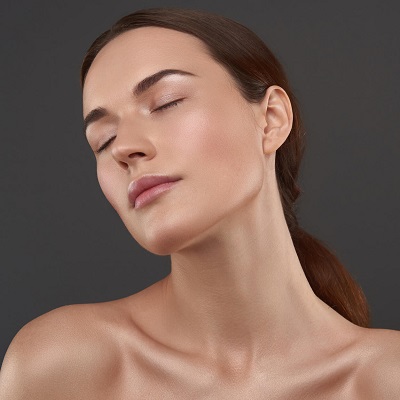Jaw Line Filler Techniques: Different Approaches for Different Results

Jawline enhancement has gained significant popularity as people seek more defined and youthful facial contours without the need for surgery. One of the most effective methods to achieve this look is through Jaw Line Filler muscat. By using injectable fillers, patients can sculpt, contour, and define their jawlines in a non-invasive way. However, the final outcome depends largely on the technique used, the type of filler chosen, and the specific goals of the patient. In this article, we'll explore various jawline filler techniques, how they work, and what kind of results you can expect.
What Are Jaw Line Fillers?
Jaw line fillers are injectable substances, often composed of hyaluronic acid or calcium-based compounds, that add volume and definition to the jawline. They provide a non-surgical solution for individuals who want to enhance their jawline’s shape, make their face appear more symmetrical, or reduce the appearance of sagging skin caused by aging. While the basic concept remains the same—injecting filler to sculpt the jawline—different techniques can yield varying results depending on individual needs and preferences.
Why Are Different Techniques Necessary?
Every person has a unique facial structure, and what works for one individual may not suit another. Jawline fillers aren’t a one-size-fits-all treatment. The right technique depends on several factors:
Facial anatomy: Some people may need filler to correct a weak chin, while others might want to address jowls or achieve a more chiseled appearance.
Desired outcome: Some patients want subtle enhancement, while others prefer a dramatic contour.
Age and skin condition: Younger patients might only need minimal filler, while older patients may require more product or different techniques to address sagging or loss of volume.
The Basic Techniques
1. Linear Threading Technique
Linear threading is one of the most common techniques for jawline fillers. The filler is injected along the jawline in a straight line, following the natural contour of the bone. This technique is effective for creating a sharp, defined look, especially in individuals with a weak jawline or those who want a more sculpted appearance.
Advantages:
Provides a structured, symmetrical look
Enhances sharpness and definition
Suitable for those seeking a prominent jawline
Disadvantages:
May not be the best choice for individuals with a lot of loose skin or sagging jowls
Can sometimes result in a more "overfilled" look if not done carefully
2. Fanning Technique
The fanning technique involves injecting the filler in a fan-like pattern, usually starting from a single entry point. By spreading the filler this way, the injector can cover a larger area with fewer punctures. This technique works well for people who need volume restoration or want to smooth out sagging areas around the jawline and chin.
Advantages:
Great for volume restoration and contouring
Can create smoother transitions between the jawline and other areas of the face
Minimizes the number of entry points, reducing the risk of bruising
Disadvantages:
Might not provide as sharp of a jawline as linear threading
Best for people seeking a more natural, subtle enhancement
3. Cannula Technique
A cannula is a blunt-tipped instrument used to inject filler under the skin. The injector creates a small entry point, and the cannula is then inserted to distribute the filler along the jawline. The benefit of using a cannula over a traditional needle is that it can reduce the risk of bruising, swelling, and damage to blood vessels.
Advantages:
Reduces the risk of bruising and swelling
Ideal for patients with sensitive skin or those prone to bruising
Provides smooth and even filler distribution
Disadvantages:
The technique may not be as precise as needle-based methods
It requires a highly skilled injector for optimal results
4. Micro-Droplet Technique
The micro-droplet technique involves injecting very small amounts of filler at multiple points along the jawline. This technique is perfect for patients who want to gradually build up their jawline or are looking for a very natural enhancement. By injecting small amounts at a time, the results tend to look softer and less noticeable.
Advantages:
Offers gradual, natural-looking results
Ideal for people who want a subtle enhancement
Provides a good solution for individuals nervous about dramatic changes
Disadvantages:
Requires multiple sessions for the best results
The process can be more time-consuming
5. Layering Technique
This advanced technique involves injecting filler in layers to add volume and contour. Starting from the deeper layers of tissue near the bone, the injector adds more filler to the superficial layers of the skin as needed. The layering technique works well for individuals with significant volume loss or those seeking a dramatic enhancement.
Advantages:
Provides a comprehensive approach to both volume and contouring
Suitable for individuals with more pronounced aging signs
Offers long-lasting and well-structured results
Disadvantages:
More filler may be required, increasing the cost
The procedure can take longer and requires an experienced injector
Choosing the Right Filler for Different Results
While technique plays a critical role in determining the final look, the type of filler used is equally important. Here are some popular filler options used for jawline contouring:
Hyaluronic acid-based fillers: These are the most commonly used fillers for jawline enhancement due to their versatility and safety profile. They provide a smooth and natural-looking result and can be dissolved if necessary.
Calcium hydroxyapatite fillers: These are thicker and more durable, providing a more structured look. They are ideal for individuals who want more dramatic, longer-lasting results.
Poly-L-lactic acid: This filler works by stimulating collagen production, gradually improving the jawline's structure over time. It’s great for people looking for a long-term solution to sagging or volume loss.
What to Expect During a Jaw Line Filler Procedure
Regardless of the technique used, a typical jawline filler procedure starts with a consultation. During this, the injector will assess your facial anatomy, discuss your goals, and determine the best approach.
On the day of the treatment, a numbing cream or local anesthetic may be applied to minimize discomfort. Depending on the technique and the amount of filler required, the entire process can take anywhere from 20 to 45 minutes. Afterward, patients can return to their daily activities with minimal downtime.
Post-Treatment Care and Results
After receiving jawline fillers, there may be some mild swelling, redness, or bruising, which typically subsides within a few days. The results are usually visible immediately, although the final look will settle after a week or two.
Short-term care: Avoid strenuous activities, excessive facial movements, and sleeping on the treated area for the first 24-48 hours.
Long-term results: Depending on the type of filler used, the results can last anywhere from 6 months to 2 years. Regular touch-ups may be required to maintain the desired look.
Conclusion
Jawline filler techniques offer a range of possibilities for achieving a defined, contoured, or youthful jawline without surgery. From the precise linear threading technique to the more subtle micro-droplet method, there’s an option for everyone, depending on individual needs and goals. However, it’s crucial to consult with a skilled injector who understands facial anatomy and can recommend the best technique for your unique facial structure. By choosing the right approach, you can achieve the results you want—whether it’s a sharp, chiseled look or a soft, natural enhancement.
Note: IndiBlogHub features both user-submitted and editorial content. We do not verify third-party contributions. Read our Disclaimer and Privacy Policyfor details.







